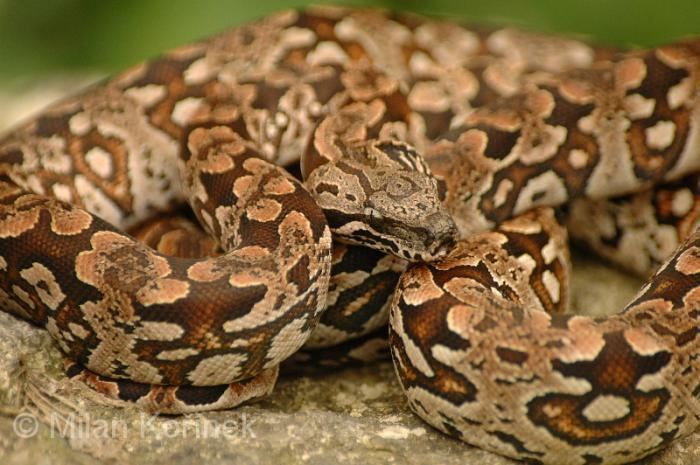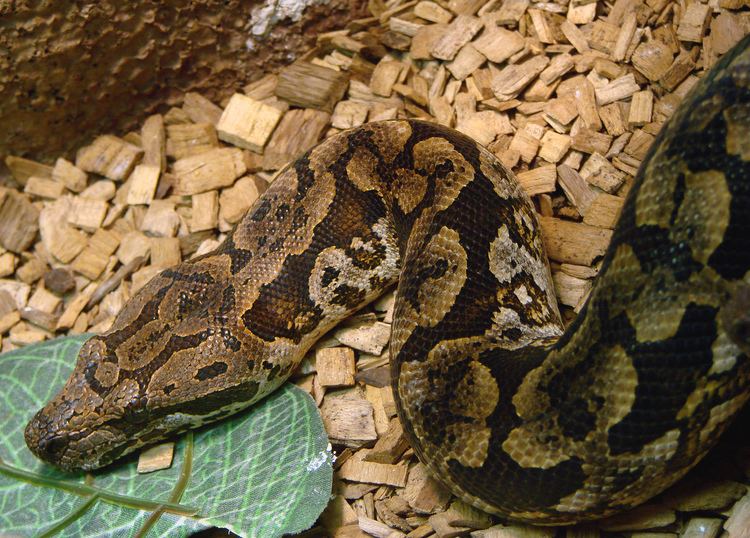Higher classification Acrantophis Order Scaled reptiles | Suborder Serpentes Genus Acrantophis Phylum Chordata Rank Species | |
 | ||
Similar Snake, Acrantophis, Reptile, Boas, Madagascar ground boa | ||
Dumeril s boa acrantophis dumerili
Acrantophis dumerili, commonly known as Dumeril's boa and the Madagascar ground boa, is a non-venomous boa species found on Madagascar and Reunion Island. No subspecies are currently recognized.
Contents
- Dumeril s boa acrantophis dumerili
- Etymology
- Description
- Geographic range
- Habitat
- Conservation status
- Feeding
- Reproduction
- Captivity
- References

Etymology
The specific name, dumerili, is in honor of French herpetologist André Marie Constant Duméril.
Description

Adults usually grow to 6.5 feet (2 m) in total length (including tail) with the maximum reported to be 8 foot, 6 inches (259 cm). Males usually have longer skinnier tails, while females tend to be larger overall.

The color pattern consists of a gray-brown ground color with darker patches, forming an effective camouflage against the leaf litter of the forest floor of their native habitat.
Geographic range
Found on Madagascar and Reunion Island (Mascarenes). The type locality given is "Amérique mérid. ?" Given as "?" by Jan (1863).
Habitat
Along the western coast and southwestern regions of Madagascar, it is found in a semi-arid habitat that gets fairly low amounts of precipitation.
Conservation status
This species is classified as Least Concern (LC) on the IUCN Red List for the following criteria: A1cd (v2.3, 1994). This means that a population reduction of at least 20% has been observed, estimated, inferred or suspected over the last 10 years or three generations, whichever is the longer, based on a decline in area of occupancy, extent of occurrence and/or quality of habitat, and based on actual or potential levels of exploitation. The species was last assessed in 2011.
A. dumerili is also listed as CITES Appendix I, which means that it is threatened with extinction and CITES prohibits international trade except when the purpose of the import is not commercial, for example for scientific research.
It is threatened by deforestation and human persecution. In some areas it is feared and often killed on sight. Although some native lore would relate stories of the souls of the tribes ancestors being in the snake skins, because patterns of faces on the sides of the snakes are interpreted, making them religiously sacred and therefore not dangerous to some cultures.
Feeding
Their diet consists of small animals, such as birds, lizards, and small mammals. They are also known to prey on other snakes.
Reproduction
Sexual maturity is within 3 to 5 years of age. Males have anal spurs, which are used in courtship. Their mating season is March through May and the young are born some 6 to 8 months later. Ovoviviparous, females give birth to a litters of 6-28. Neonates are 12-18 inches (30–46 cm) long.
Captivity
Once exported from Madagascar in great numbers, trade in this species has since been heavily restricted. They are, however, quite prolific in captivity, and captive bred animals are relatively inexpensive and easy to find in the exotic pet trade. Though their size makes them more suited to someone experienced with large constrictors, they have a typically docile nature, and readily feed on rats. The main concern is that they are prone to stress, which can sometimes cause them to stop eating or contribute to other health issues.
